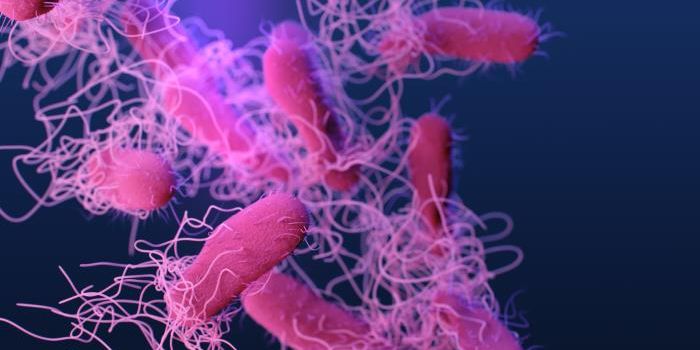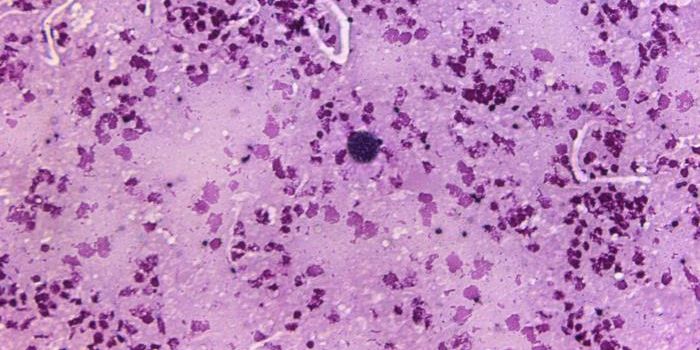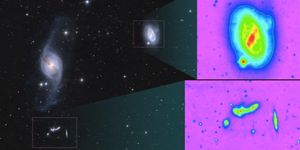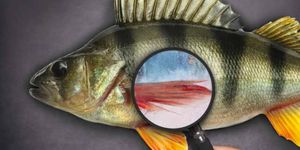Finding contamination in food is a very important public health concern. Infection from one specific pathogenic bacterium, Escherichia coli O157:H7, can lead to dangerous health conditions like hemorrhagic diarrhea and kidney failure. New work done at Purdue University and published in Scientific Reports has produced a new way to detect E. coli O157:H7 contamination in food that is much faster than current methods.
A bacteriophage is a virus that strictly infects bacteria, which you can watch in the dramatic video above. This new assay utilizes one that has been engineered, called NanoLuc, and it makes an enzyme that causes E. coli O157:H7 to emit light if it is infected. This rapid detection method could be critical to halting the distribution of contaminated food.
"It's really practical. [Testing labs] don't have to modify anything they're doing. They just have to add the phage during the enrichment step of the testing protocol," explained Bruce Applegate, senior author of the work and an Associate Professor of Food Science at Purdue. "We could detect as few as four bacteria in eight hours, and the process is cheaper than tests being used today."
The majority of E. coli strains that inhabit the gastrointestinal tract of humans and other organisms are harmless and actually beneficial to digestion. However, there are virulent strains that cause serious harm when they are out of place. As little as ten units of E. coli O157:H7 that can form colonies are enough to result in serious illness.
Typical detection assays are not sensitive enough to find only a few E. coli O157:H7 cells in any given sample. As such, inspectors have to enrich samples so that bacteria within them multiply to detectable levels. This new bacteriophage based technique can simply be added before the process of enriching the sample is completed, and E. coli O157:H7 can be detected within seven to nine hours.
"The current detection methods cannot bypass the enrichment process, but our technology can explore the enrichment phase. That can give us a time advantage over other methods," commented the first author of the work, Dandan Zhang, a graduate research assistant in the Purdue Department of Food Science.
False positives are also unlikely with this methodology. The bacteriophage can’t make the light-emitting protein until it interacts with E. coli O157:H7, which also happens to be the only bacteria that NanoLuc is able to infect.
"The phage is just a virus. It cannot carry out metabolism until it infects a bacteria, which in this case is E. coli O157:H7," Applegate continued. "They won't create these proteins unless they've found their specific host."
Several variables - the amount of light emitted, the amount of bacteriophage added, and the amount of time elapsed - can be combined in a formula to indicate the amount of E. coli O157:H7 contamination that is present.
Future work, Zhang said, could hone in on E. coli O157:H7 detection in produce samples like lettuce. Additionally, more bacteriophages could be created that highlight the presence of pathogens like Salmonella in a similar way.
Sources:
Phys.org via
Purdue University,
Journal of Microbiology and Biotechnology,
Scientific Reports








